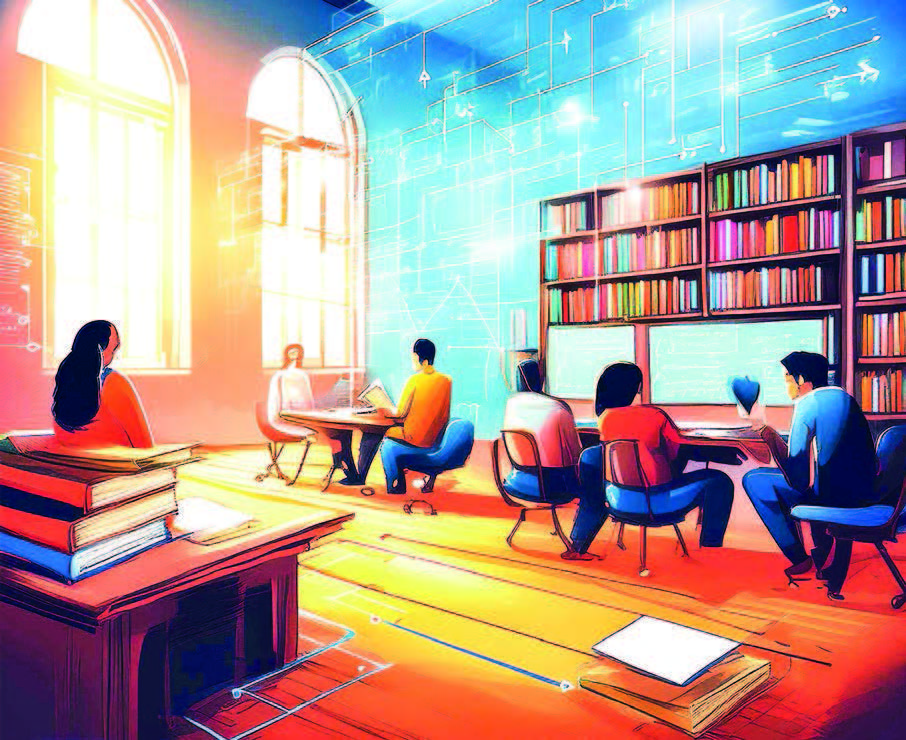By Hu Wo (Cuckoo’s Song)
If a person comes to the human world, the process of learning will necessarily be an essential life skill of his. According to Wayne Weiten, learning includes not only the acquisition of knowledge and skills but also the formation of habits, personality traits, emotional responses, and personal tastes. In fact, most human behaviours are the end result of learning.
A learning process is supposed to occur in six stages.
1) Respond to stimuli.
2) Select suitable stimuli by sensory organs.
3) Process their meanings through thinking.
4) Form new experience or knowledge.
5) Apply them in a similar situation.
6) Change in behaviour.
Only when the change in behaviour is sustained will the learning process end.
According to the Learning Process Model of Gagne, each of the eight phases in a learning process contains unique internal or external action that influences the next phase.
1) Motivation Phase; Expectancy
2) Apprehension Phase; Observation-Perception Selection
3) Acquisition Phase; Encoding-Prestoring
4) Retention Phase: Memory
5) Recall Phase: Searching
6) Generalization Phase; Transfer
7) Performance Phase; Response
8) Feedback Phase; Reinforcement
Of those phases, learning transfer will herein be explained below.
In educational psychology, learning transfer is discussed as the efficiency and ability to apply experience, knowledge, or skills that have been stored in long-term memory to a new learning process or related situation. There are many instances where the phenomenon of learning transfer occurs in learning activities at the school level. For example, the skill of multiplication is used to learn the operation in the division; skills acquired from mathematics are able to be used to learn science, especially physics; skills obtained from language can be used to write letters and essays as well as to get knowledge of other subjects. Of course, learning transfer is not only crucial for new learning. On top of that, the school curriculum is typically designed in accordance with the principle of learning transfer. After all, learning transfer is a life-long process, whether at school or outside school, and it includes an individual’s future career.
Positive learning transfer is mostly classified into two main categories: lateral and vertical. As Gagne explained, lateral learning transfer refers to the application of acquired experience to another similar situation or activity with the same level of difficulty. For instance, students who have learnt the meaning of new words will use them to learn reading material such as newspapers. On the other hand, vertical learning transfer means an increase in experience which has been attained to a higher level so that the learning process can be upgraded further. For example, students who have mastered the concept of quadrilateral can use it for the concept of square, rectangle, parallelogram, rhombus, or kite.
Some psychologists divide learning transfer into five main types, which will be explained briefly.
1. Bilateral transfer: It refers to learning transfer in skill and training, such as physical education. For instance, training by using the left leg can enhance the skill of the right leg. So, it is known as cross-training.
2. Mediated transfer: It occurs when an individual who has learned a certain fixed response from external stimuli uses the response to form a new reaction under the same category as the previous stimuli. For instance, after learning how to sketch the human body, it will be helpful for a student to acquire the technique of carving the wooden human body.
3. Learning set transfer: It is a learning technique that is usually achieved through the experiences acquired from a number of learning sessions within the same category. According to Harlow, it could even occur in two different situations when a number of progressive training courses are held after the first learning situation. This is because, during the time of progressive training, an individual eventually has experiences from the learning set and develops a new learning skill to apply to the higher-level learning situation. For instance, if Social Studies is taught by including actual practice in looking at current events from a historical perspective, they are not digging up widely applicable questions or conclusions.
4. Negative learning transfer: It means the old learning interferes with the new learning and vice versa, especially due to proactive inhibition, retroactive inhibition, and habitual inhibition. Proactive inhibition occurs when the first learning procedure reduces the retrieval of subsequently learned material, producing a forward effect. Conversely, retroactive inhibition comes about when the new learning lessens the retrieval of previously learned material, causing a backward effect. Habitual inhibition takes place when an old habit interferes with the formation of a new habit. For instance, a left-handed student will get upset about developing his writing practice with the right hand.
5. Zero learning transfer: It is simply the same as no learning transfer. This occurs in a certain new learning situation based on old learning, where the learning result is zero, particularly owing to the inappropriate application of an acquired skill or concept which is not related to new learning. For instance, it is not relevant to use the addition skill to learn the division skill.
C Ellis, relying upon his own observation, even established a few principles of learning transfer similar to those mentioned above as follows: -—
• Principle of identical elements
• Principle of sufficient basic training
• Principle of learning set
• Principle of stimuli diversification
• Principle of insight


